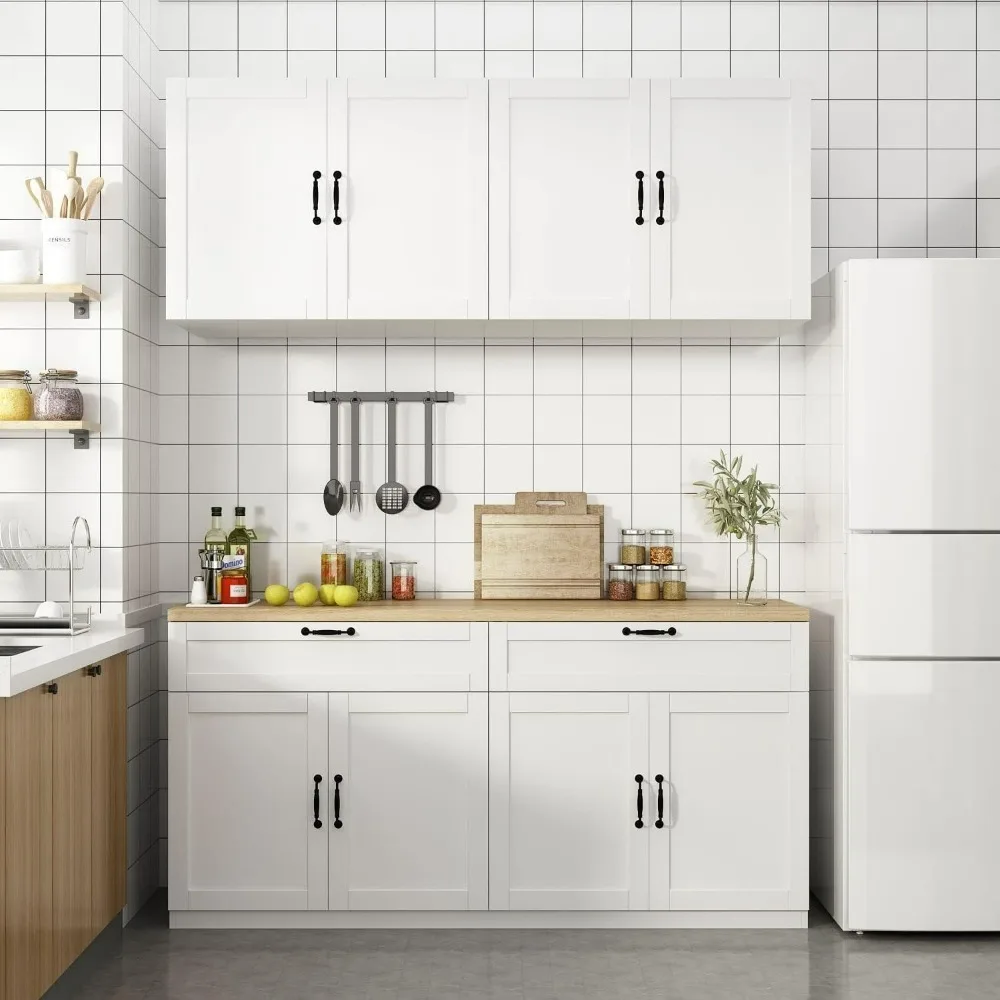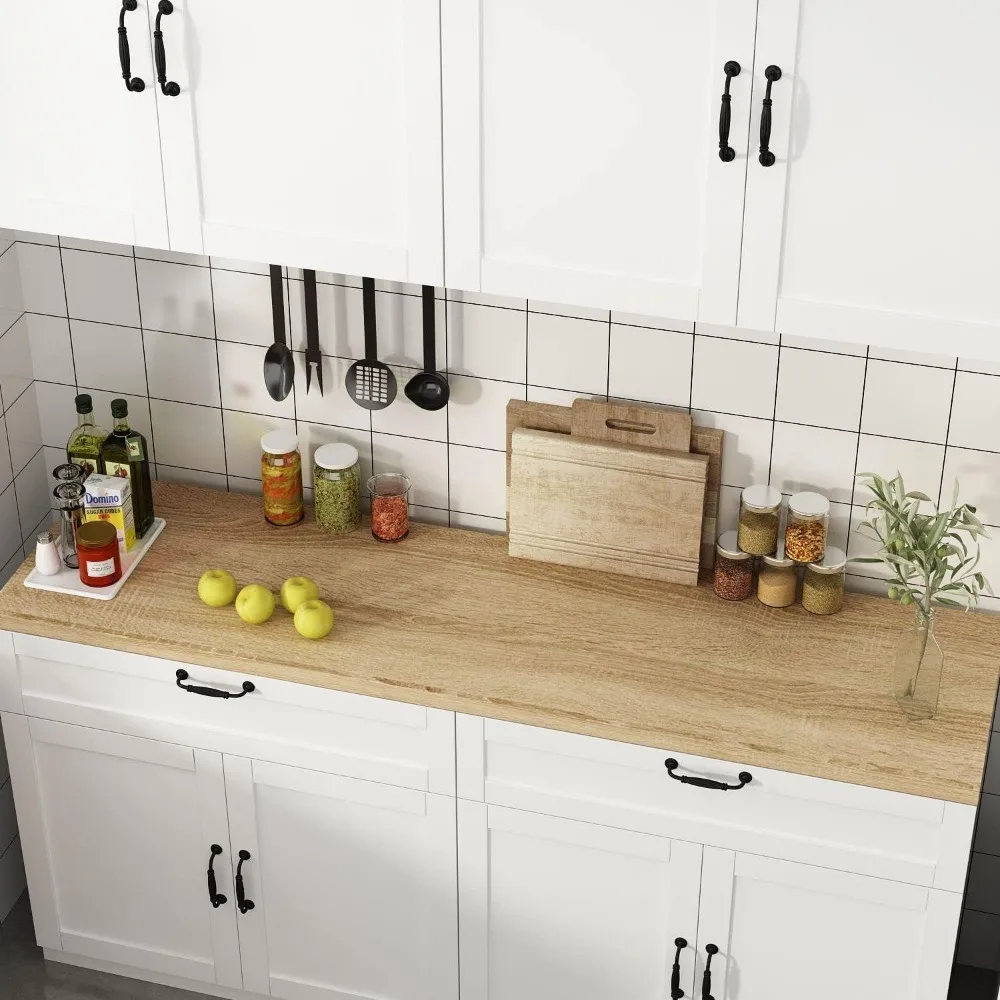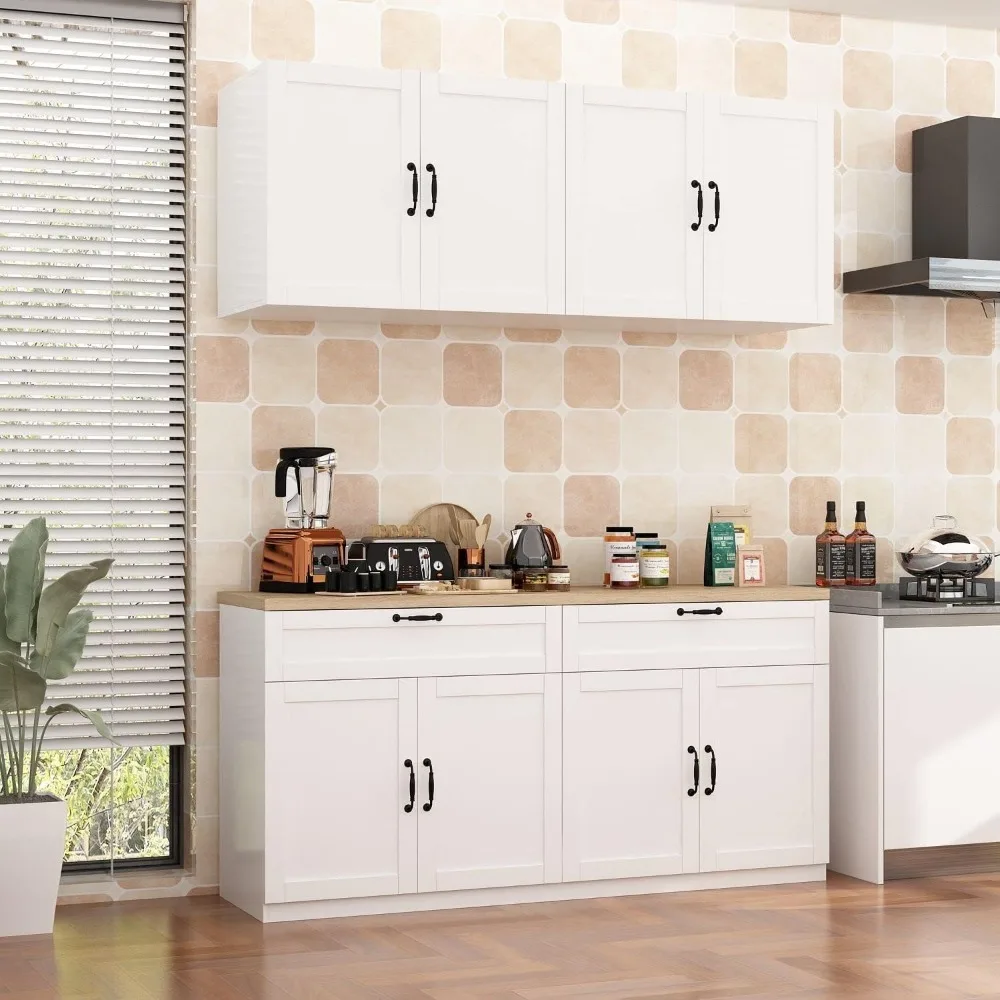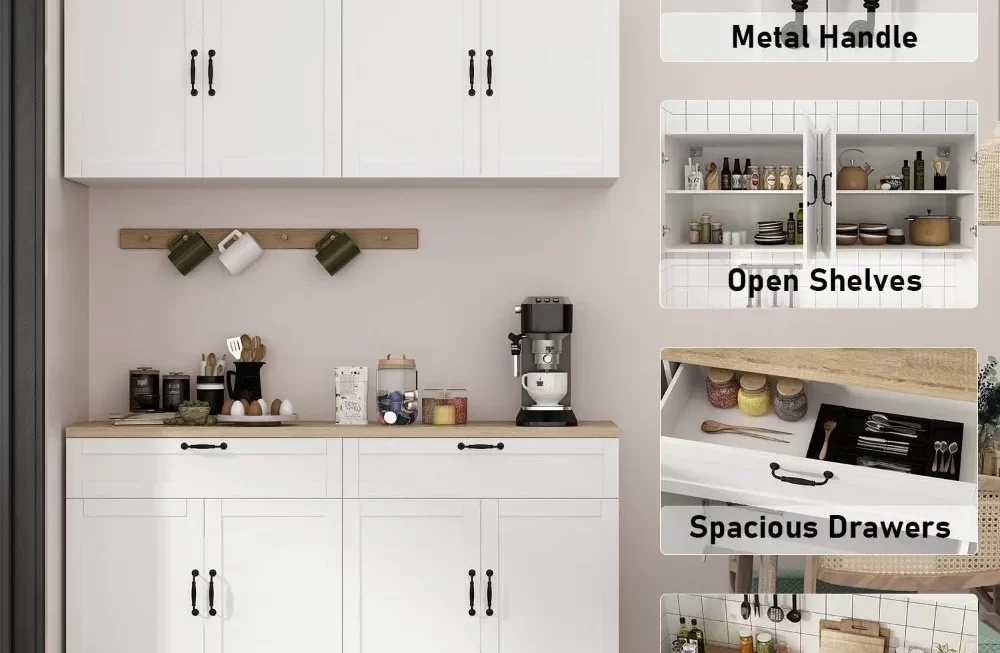Introduction to Staining Kitchen Cabinets
Transforming your kitchen cabinets by staining them is a cost-effective way to make old units look new. This appealing method enhances the natural features of wood, such as grain and knots, while infusing new life into tired-looking cabinetry. Staining not only boosts the aesthetic appeal of your kitchen but also adds a layer of protection to the wood, ensuring a durable finish that can stand up to the daily demands of a busy kitchen. Whether you’re targeting a traditional charm or a modern twist, understand how to stain kitchen cabinets can result in a significant visual impact without the need for a complete renovation.

Benefits of Staining Kitchen Cabinetry
Staining your kitchen cabinets offers numerous advantages. Firstly, it enhances the natural beauty of the wood. The stain allows the unique characteristics like grains and knots to shine through, giving your cabinets a distinctive look. This method also increases the overall value of your kitchen by giving it a high-end, customized appearance.
Additionally, stained cabinets tend to hide dirt and smudges better than painted ones. This is especially practical in a high-traffic area like the kitchen. Staining is also more forgiving than painting. Minor scratches and marks can blend seamlessly into the stained finish. This makes maintenance much easier, as small imperfections won’t stand out.
Moreover, staining your kitchen cabinets is a sustainable option. You refresh the existing units instead of replacing them. This reduces waste and often requires fewer resources than manufacturing and installing new cabinets. Also, the protective layer added by the stain extends the life of the wood, ensuring your kitchen remains attractive for longer.
Finally, staining offers versatility in design. You can choose from a range of stain colors and finishes to match your decor. This adaptability makes it easy to achieve either a traditional or a contemporary kitchen aesthetic depending on your preferences.
Preparing Your Cabinets for Staining
Before you embark on the journey of staining your kitchen cabinets, meticulous preparation is key. This prep work lays the foundation for a successful staining project and prevents future issues. Here’s a rundown of the steps you need to take for preparing your cabinets for staining:
- Remove Hardware and Clean Surfaces: Begin by taking off all the handles, knobs, and hardware. Keeping these in a bag will prevent loss. Clean the cabinets thoroughly, as kitchens often accumulate grease. Use a strong cleaner like TSP, protecting yourself with gloves and goggles.
- Strip Existing Finish: If your cabinets are not bare wood, remove all existing finishes—be it paint or another stain—using a designated stripper.
- Protect Your Area: Clear the countertops and cover the floor with drop cloths to shield against any spills or debris.
- Sand the Wood: Use medium-grit sandpaper and follow up with fine-grit, always moving in the direction of the wood grain. If you have a palm sander, this step will be more efficient. Fill any imperfections with wood filler and sand again once dry.
Remember, patience during the prep stage can greatly influence the final quality of your staining project. Ensure each step is thoroughly and carefully carried out for the best results.
Selecting the Appropriate Wood Stain
When it comes to how to stain kitchen cabinets, choosing the right wood stain is critical. This will impact not just the color, but also the finish and durability of your cabinets. Here’s how you can select the most suitable stain for your kitchen units:
- Match the Stain with Your Wood Type: Different woods react uniquely to stain. Find a stain that complements your cabinet’s wood. For example, oak takes stain well and can handle a darker shade, while maple works better with a lighter stain.
- Consider the Light: Think about your kitchen’s lighting. If it’s a dark space, a lighter stain can brighten it up. For a well-lit kitchen, a darker stain can add warmth.
- Test Samples: Always test stains on a small, inconspicuous area or on a spare piece of wood that’s the same type as your cabinets. This ensures you’ll like the final color.
- Water-Based vs. Oil-Based Stains: Water-based stains are easier to clean up and more environmentally friendly but may raise the grain of the wood. Oil-based stains penetrate deeper and have longer drying times, which can be beneficial for a smoother finish.
- Durability Matters: Choose a stain known for its durability, especially in a busy kitchen environment. The stain should withstand moisture and frequent cleaning.
- Sheen and Finish: Consider the sheen you want – matte, satin, semi-gloss, or gloss. The sheen will affect how the light reflects on your cabinets and can also impact maintenance needs.
By carefully considering these factors, you will ensure that the stain you select will meet your aesthetic preferences and withstand the day-to-day use of a bustling kitchen. Remember, the right preparation and quality materials are paramount for a professional-looking finish.

The Step-by-Step Staining Process
Staining your kitchen cabinets can be broken down into clear, manageable steps. Here’s a simple guide to help you achieve a professional look.
- Clean and Protect: Start by removing all hardware from your cabinets. Keep these pieces in a safe place. Clean the cabinets using a strong cleaner like TSP (Trisodium Phosphate). Ensure to protect yourself with gloves and goggles due to its strength. After cleaning, remove any residue and let the surfaces dry.
- Strip and Sand: If your cabinets have a previous finish, strip it using a chemical paint stripper. Once stripped, begin sanding with medium-grit sandpaper. Progress to fine-grit to achieve a smooth surface. Always sand in the wood grain direction. Fill in any gaps or imperfections with wood filler.
- Treat the Wood: Prior to staining, treat your wood. This ensures it’s protected against moisture and wear. Apply the wood conditioner as per the manufacturer’s directions. Allow it to dry completely.
- Apply Stain: Choose the right type of stain for your cabinet wood. Apply the stain using a long-haired, soft bristle brush. Start with a light coat and ensure it’s evenly spread across the surface. Work in the direction of the grain for best results.
- Dry and Repeat: Allow the first coat of stain to dry thoroughly, usually taking about 2-4 hours. After the initial coat has dried, apply a second coat for a deeper color and better coverage.
- Final Touches: Once satisfied with the color, some stains require a top coat for extra protection. Check the manufacturer’s recommendations. If needed, apply a sealer or topcoat as directed.
By following these steps, you can successfully stain your kitchen cabinets for a refreshed and vibrant appearance. Proper preparation and application are the keys to a beautiful and lasting finish.
Tips for a Professional Quality Finish
Achieving a professional quality finish when staining kitchen cabinets involves attention to detail and careful execution. Here are some essential tips to guide you:
- Use High-Quality Stain: Invest in a premium wood stain that matches your cabinet’s wood type. High-quality stains offer better coverage and longevity.
- Apply Even Coats: Ensure each coat of stain is even and uniform. This prevents blotches and enhances the final appearance.
- Maintain a Clean Workspace: Keep your working area clean and free of dust. Dust particles can stick to wet stain and ruin the smooth finish.
- Don’t Rush the Drying Time: Allow the stain to dry completely between coats. Rushing this process can lead to a tacky finish.
- Use the Right Tools: Employ the appropriate brushes or rags for application. Tools impact the smoothness and evenness of the stain application.
- Monitor Room Temperature: Stain dries best in a controlled environment. Avoid extreme temperatures which can affect the drying process and final look.
- Light Sanding Between Coats: Lightly sand between coats with fine-grit sandpaper. This ensures a smooth base for each layer of stain.
- Seal the Stain: If your stain doesn’t include a sealer, apply a topcoat. This protects the stain and extends the durability of your finish.
Following these tips will help you achieve a flawless finish, enhancing the beauty and longevity of your kitchen cabinets.
Maintenance and Care for Stained Cabinets
Once you’ve completed the process on how to stain kitchen cabinets, proper maintenance is crucial to keep them looking their best. Follow these simple, straightforward care tips to extend the life and beauty of your stained cabinets:
- Regular Cleaning: Wipe your cabinets frequently with a soft cloth. Avoid abrasive cleaners that can damage the stain and finish. Use gentle, wood-friendly cleaners instead.
- Immediate Spill Response: Clean spills and splatters immediately. Prolonged exposure to liquids can damage the wood and stain.
- Avoid Excessive Moisture: Kitchens are prone to moisture. Use exhaust fans to reduce humidity and dry any areas where water has spilled.
- Touch-ups: If you notice small scratches or wear, apply a bit of matching stain on a small brush to cover imperfections. Always test in an inconspicuous area first.
- Polishing and Waxing: Occasionally, polish or wax your cabinets to enhance their luster. Ensure the product is suitable for stained wood surfaces.
- Protect From Sunlight: Prolonged exposure to sunlight can fade the stain. Use window treatments to limit direct sunlight on your cabinets.
By taking these easy steps, your stained kitchen cabinets will stay looking as good as new for years to come. Handling them with care and keeping up with simple maintenance routines will protect your investment and ensure your kitchen remains a beautiful and inviting space.

Common Questions About Staining Kitchen Cabinets
When considering how to stain kitchen cabinets, several common questions arise. Here are answers to some frequently asked queries to help you proceed with confidence.
Can you stain over existing kitchen cabinets?
Yes, you can stain over existing kitchen cabinets. However, remove all old finishes first for best results.
Is it difficult to stain kitchen cabinets?
Staining kitchen cabinets is not very hard. Most DIYers can do it well with good preparation and the right materials.
Is staining kitchen cabinets a good idea?
Yes, staining is beneficial. It provides a durable finish and allows for easy touch-ups.
What is the best stain for kitchen cabinets?
The best stains for kitchen cabinets are those that match your wood type. Ensure they are durable and appropriate for kitchen use.



